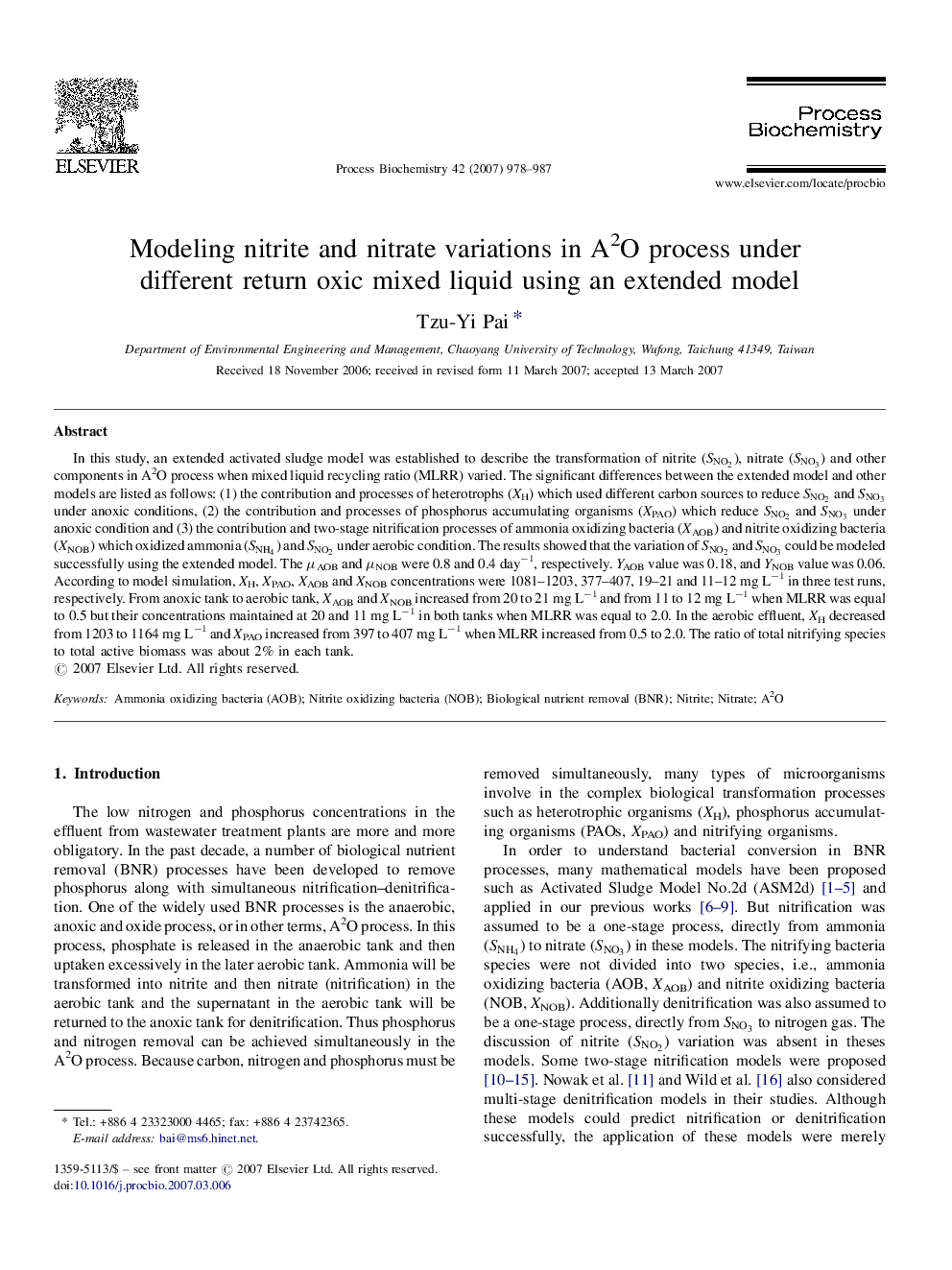| کد مقاله | کد نشریه | سال انتشار | مقاله انگلیسی | نسخه تمام متن |
|---|---|---|---|---|
| 35883 | 45112 | 2007 | 10 صفحه PDF | دانلود رایگان |

In this study, an extended activated sludge model was established to describe the transformation of nitrite (SNO2SNO2), nitrate (SNO3SNO3) and other components in A2O process when mixed liquid recycling ratio (MLRR) varied. The significant differences between the extended model and other models are listed as follows: (1) the contribution and processes of heterotrophs (XH) which used different carbon sources to reduce SNO2SNO2 and SNO3SNO3 under anoxic conditions, (2) the contribution and processes of phosphorus accumulating organisms (XPAO) which reduce SNO2SNO2 and SNO3SNO3 under anoxic condition and (3) the contribution and two-stage nitrification processes of ammonia oxidizing bacteria (XAOB) and nitrite oxidizing bacteria (XNOB) which oxidized ammonia (SNH4SNH4) and SNO2SNO2 under aerobic condition. The results showed that the variation of SNO2SNO2 and SNO3SNO3 could be modeled successfully using the extended model. The μAOB and μNOB were 0.8 and 0.4 day−1, respectively. YAOB value was 0.18, and YNOB value was 0.06. According to model simulation, XH, XPAO, XAOB and XNOB concentrations were 1081–1203, 377–407, 19–21 and 11–12 mg L−1 in three test runs, respectively. From anoxic tank to aerobic tank, XAOB and XNOB increased from 20 to 21 mg L−1 and from 11 to 12 mg L−1 when MLRR was equal to 0.5 but their concentrations maintained at 20 and 11 mg L−1 in both tanks when MLRR was equal to 2.0. In the aerobic effluent, XH decreased from 1203 to 1164 mg L−1 and XPAO increased from 397 to 407 mg L−1 when MLRR increased from 0.5 to 2.0. The ratio of total nitrifying species to total active biomass was about 2% in each tank.
Journal: Process Biochemistry - Volume 42, Issue 6, June 2007, Pages 978–987